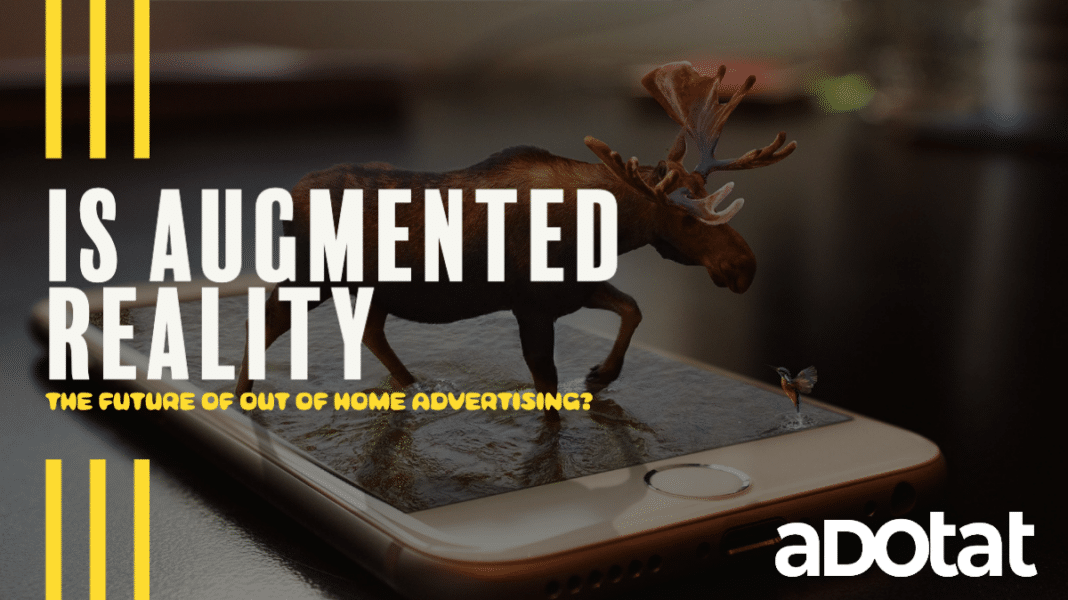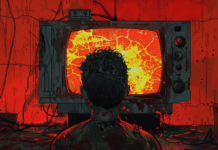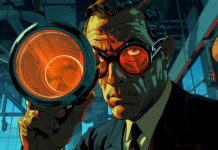When you see an outdoor ad that looks like it’s been there forever, but the text is all new, it’s because it has!
Outdoor ads are becoming increasingly advanced. From simple, static advertisements to ones that use augmented reality and are easy for consumers to share on social media—the options today make outdoor campaigns more interactive than ever before.
Using AR, advertisers have transformed ordinary OOH ads into immersive experiences that bridge the gap between real and digital worlds. This allows brands to create more engaging marketing strategies while reaching a wider audience.
In 2014, Timberland was one of the first brands to use AR in a retail setting. They hung a digital screen in their store-front window and invited after-hours passersby to use their “Magic Mirror” to virtually try on different outfits. The screen scanned each person and their movements, then displayed selected apparel on a similar body type. Shoppers could save their favorites and receive them via email for purchase or social sharing.
According to estimates by GlobalData and Statista, the market for augmented reality will grow from $1.7 billion in 2018 to $25 billion by 2023; this number is expected to increase to $40 billion by 2033. With millions of businesses ready to adapt AR for their marketing activities (and with Augmented Reality at the forefront), both conventional out-of-home advertising and digital advertising have entered a new era.
Out of Home advertising is where it’s at. It’s the real thing. You can’t block it, skip it, or view it by bots. It’s always on, surrounding and immersing audiences with real, powerful advertising wherever consumers live, work, travel, shop and play. If you want to reach your audience in an authentic way and make a lasting impression, Out of Home advertising is what you need!
The immersive experience created by AR creates a bond between the user and the billboard or poster.
The user is able to receive instant feedback from the ad when interacting with it, which creates a bonding experience that creates long-lasting positive feelings. A great example of this is the NHS campaign, which allows users to virtually donate blood to those in need and see the beneficial effect of their actions.
Out-of-Home Advertising is entering a new era, combining traditional advertising with the digital world.
From billboards to treasure hunts, OOH marketing campaigns are becoming more immersive and interactive. Below are some awesome examples of how businesses can incorporate AR into their OOH marketing campaigns to reach their customers.
1) Jackson Family Wines uses in-store billboards and aisle advertisements as part of their marketing revolutionary AR campaign. In partnership with the Microsoft Mixed Reality Capture Studio, RPR delivered Siduri’s Holographic Web AR Experience—the world’s first such application for a winery.
The holograms add a new dimension of interaction to the billboard or bottle, allowing users to interact with Adam Lee and learn about his critically-acclaimed Pinot Noir specialist company.
2) The SoFi Stadium in Los Angeles, California, is no stranger to innovative tech. In fact, it’s one of the first sporting venues to take part in a truly innovative AR experience: “Rams House AR.”
The Rams House AR campaign was launched in partnership with Stagwell Group and used only smartphones to create a virtual experience on top of an IRL one. Using the Stagwell-owned ARound platform (a 3D spatial computing platform), users could view giant Rams players, fireworks, enormous floating Rams heads, a gamified field goal challenge and more superimposed onto the physical stadium.
3) McDonald’s in Singapore launched an AR-based game that customers could play using their mobile devices while waiting in line for their food. The game, called “McDonald’s Treasure Hunt,” allowed players to find virtual treasure hidden within the restaurant, earning them discounts and free meals.
The McDonald’s Treasure Hunt game in Singapore likely worked well for several reasons. Firstly, it provided a fun and engaging way for customers to pass the time while waiting in line for their food. Instead of simply standing around, customers could actively participate in a game, which made the wait feel shorter and more enjoyable.
Secondly, the game added an element of surprise and excitement to the customer experience. By allowing customers to find virtual treasure hidden within the restaurant, it created a sense of adventure and discovery that they may not have otherwise experienced.
Additionally, the game incentivized customers to participate by offering discounts and free meals as rewards. This added value to the experience, making it more appealing for customers to participate in the game. It also encouraged them to come back to the restaurant to continue playing and potentially earn more rewards.
4) Coca-Cola placed AR-enabled vending machines in various locations around London, allowing consumers to interact with the machines in a more engaging way. Users could use their smartphones to scan a QR code on the machine, launching an AR experience that allowed them to play games, take quizzes, and even win prizes.
This represents a new way of engaging with customers. Traditional vending machines are passive, they only offer to dispense a product. However, by adding AR capabilities, Coca-Cola has transformed the vending machine into an interactive and engaging experience for customers. This allows for a deeper connection with customers and more memorable brand engagement.
The use of AR-enabled vending machines is also a way to create a unique and memorable experience that differentiates Coca-Cola from its competitors. This can help to build brand loyalty and attract customers to the brand.
5) L’Oreal Paris used AR to create virtual makeover experiences in several of its retail stores. Customers could use a special app to try on different hairstyles and makeup looks, allowing them to see how they would look before making a purchase.
This is awesome because it allowed customers to try on different hairstyles and makeup looks before making a purchase. This can be particularly beneficial for customers who are unsure about which products to buy or how to use them. By providing a virtual try-on experience, L’Oreal Paris was able to help customers make more informed purchasing decisions, which can lead to higher levels of customer satisfaction and increased sales.
The use of AR also allows L’Oreal Paris to create a more interactive and engaging experience for customers. It encourages customers to experiment with different looks and to take their time exploring different products, which can lead to increased dwell time in the store and more opportunities for impulse purchases.
The use of augmented reality (AR) in out-of-home advertising has shown to be a creative and effective way to engage with customers. The examples of McDonald’s Treasure Hunt in Singapore, Coca-Cola’s AR-enabled vending machines in London, and L’Oreal Paris’ virtual makeover experiences in retail stores all demonstrate the potential of AR to create fun, interactive, and memorable experiences for customers.
These types of campaigns can also add value to the customer experience by providing discounts, prizes, and the ability to try on products before purchasing.
Additionally, by leveraging the widespread use of mobile devices, these campaigns can be accessible to a wide audience and reach more people. As technology continues to advance and become more ubiquitous, it is likely that we will see more companies experimenting with AR as a way to engage with customers and build brand loyalty.










